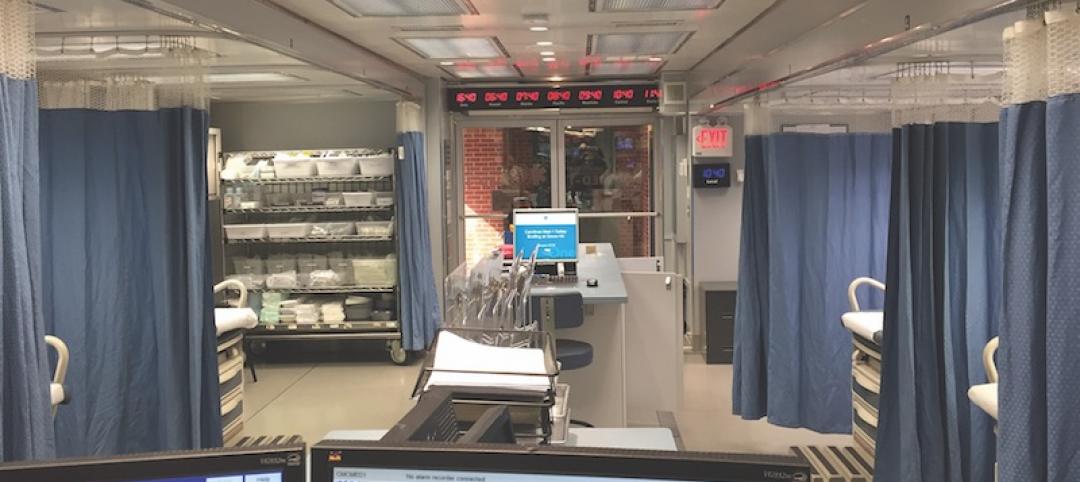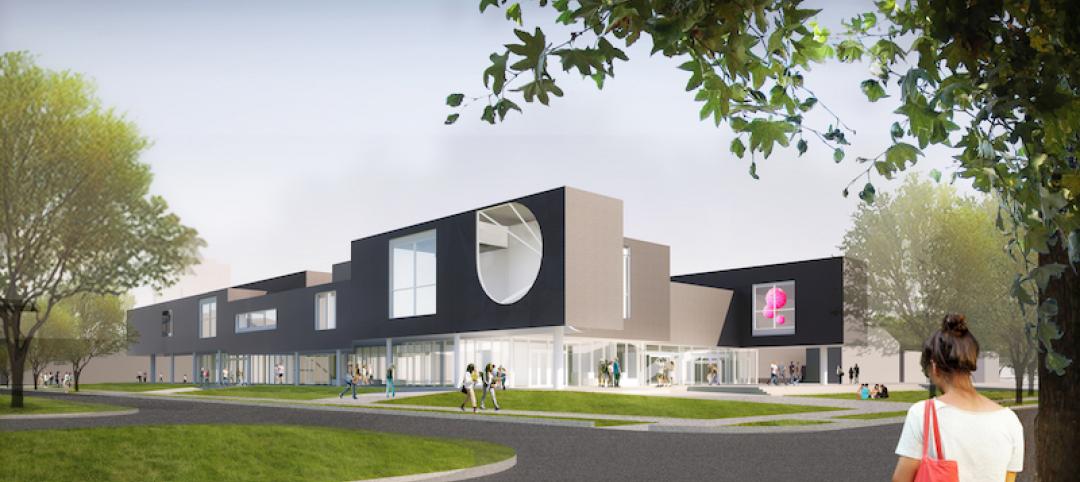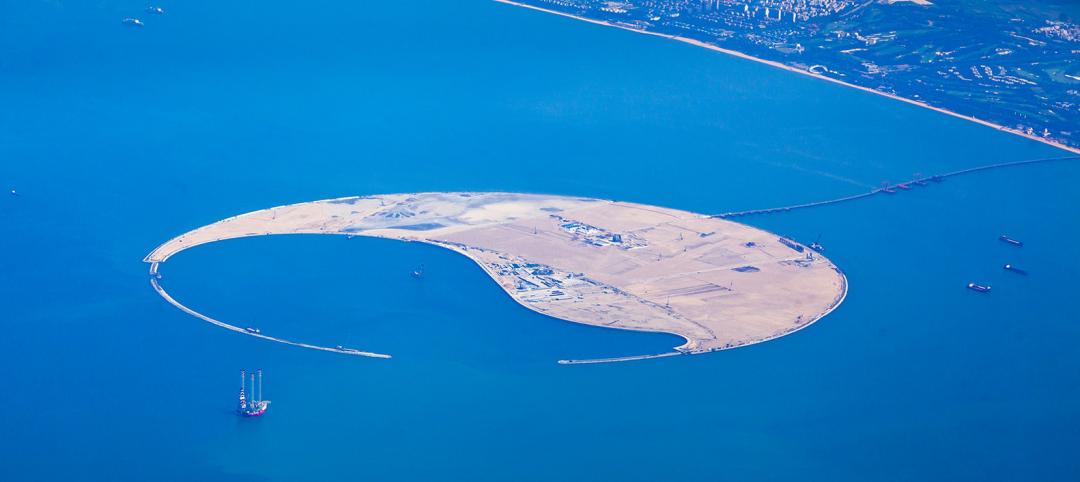There are many hurdles to overcome when completing a life cycle cost assessment. LCCAs have been praised by some and criticized or viewed with skepticism by others. Some AEC professionals like to use LCCAs to provide evidence that a certain design with a higher first cost attached to it actually achieves lower total cost of ownership over time.
Such an analysis, however, is only as good as the data that is used to complete it; in the end, you have to be able to justify and defend your results. When completing an LCCA, it is important to remain neutral and to use unbiased data.
Following are some words of advice regarding LCCAs, based on RMF Engineering’s experience on the Berkeley County School District HVAC study.
1. AVOID USING A “SIMPLE PAYBACK” METHODOLOGY. As the name implies, simple payback is a rudimentary methodology, and the results can be unsophisticated and even misleading. This method should not be used as an in-depth LCCA tool.
2. DON’T HIDE YOUR ASSUMPTIONS. The paucity of data on certain costs means that you will have to make assumptions, but these should not be allowed to affect the outcome of the analysis. It is important to thoroughly document all assumptions, costs, and calculations used in the analysis.
3. GET YOUR CONSTRUCTION DATA FROM THE BEST AVAILABLE SOURCES. Not many contractors and sales representatives are willing to divulge their actual cost for equipment, materials, and installation. Usually the best they will give you is the cost in dollars per square foot, which, unfortunately, is not sufficiently detailed to provide a proper analysis.
For HVAC life cycle cost analyses, manufacturers will often provide budget pricing for specific pieces of equipment, which can be useful. Resources such as RSMeans and published pricing guides for piping and other materials are also great resources for calculating cost and should be used instead of general cost.
4. MAKE THE EFFORT TO GET SOLID MAINTENANCE DATA. It is important to have a clear understanding of how an HVAC system will be maintained as well as how much it will cost the owner to maintain. Some owners prefer to do their own maintenance; others contract maintenance out. Some perform maintenance at regularly scheduled intervals; others wait until the equipment breaks down. Maintenance is probably the most poorly documented cost item in most LCCAs, but it can have a major impact on the accuracy and validity of the analysis. Make sure your maintenance data is up to date and specific to your project.
5. NAIL DOWN THE OWNER’S EXPERIENCE WITH EQUIPMENT LIFE. The life cycle of equipment varies by owner and can be drastically different than the manufacturer’s reported data. When comparing different types of systems, it’s important to discuss the owner’s experience with equipment life and how long they plan to use certain products. Any sharp differentiation from the norm could have a significant impact on the outcome of your analysis.
6. ANALYZE THE RESULTS CAREFULLY TO DETERMINE THE LEVEL OF CERTAINTY. For the BCSD project, the difference between the least expensive and next least expensive system was significant (13.1%), so we were comfortable in recommending it. Unfortunately, not every LCCA results in a clear winner. Each analysis will have a different level of uncertainty associated with it due to the assumptions, variables, and the analysis type. The more variables and assumptions there are, the higher the level of uncertainty. There are often intangibles that cannot be associated with a quantifiable cost, and one of these might end up becoming the deciding factor in your analysis.
7. LOOK FOR LCCA FUNDING FROM NON-CLIENT SOURCES. For the Berkeley County SD project the local utility cooperative, which happens to place a great deal of value on customer education, offered to partially fund the study in order to have access to the data. When proposing an LCCA to a client, check around to see who else could benefit from the analysis. There may be funding available to offset the cost to the owner or provide additional funding for a more in-depth study.
8. EXPECT THE UNEXPECTED. For our project, we originally modeled gas boilers for the water-source heat pump system to be similar to the four-pipe system. The energy models showed that there was virtually no requirement for heating of the condenser water loop due to our building type and climate. We suspected this might be the case because a nearby high school had been operating without a boiler and did not have heating problems. It was later decided that an electric boiler would be a better fit for the school district’s HVAC systems because its initial cost and associated annual maintenance costs would be far less than a gas boiler. It’s likely that you will face similar unanticipated results in future projects, so be prepared.
Related Stories
BIM and Information Technology | Aug 30, 2016
BIM GIANTS: A ranking of the nation's top BIM design and construction firms
HOK, Perkins+Will, Turner Construction Co., The Whiting-Turner Contracting Co., Jacobs, and Thornton Tomasetti top Building Design+Construction’s annual ranking of the nation’s largest BIM AEC firms, as reported in the 2016 Giants 300 Report.
Building Tech | Aug 26, 2016
NBBJ’s Goldilocks sensor technology can help employees find a workspace that is just right
The technology measures light levels, humidity and temperature, motion, and sound.
Great Solutions | Aug 23, 2016
11 great solutions for the commercial construction market
A roll-up emergency department, next-gen telemedicine center, and biophilic cooling pods are among the AEC industry’s clever ideas and novel innovations for 2016.
| Aug 19, 2016
RECONSTRUCTION GIANTS: Facelifts give buildings new identities, even as they keep a few wrinkles
Reconstruction is always a balancing act between the client’s pro forma and what the building needs to be vibrant again.
| Aug 19, 2016
Top 130 Reconstruction Architecture Firms
The Beck Group, Stantec, and IMC Consruction top Building Design+Construction’s annual ranking of the nation’s largest reconstruction sector architecture and A/E firms, as reported in the 2016 Giants 300 Report.
| Aug 18, 2016
LOCAL GOVERNMENT GIANTS: A ranking of the nation’s top design and construction firms in local sector work
HOK, Stantec, Turner Construction Co.,Clark Group, AECOM and STV top Building Design+Construction’s annual rankings of the nation’s largest local government sector AEC firms, as reported in the 2016 Giants 300 Report.
| Aug 18, 2016
STATE GOVERNMENT GIANTS: A ranking of the nation’s top design and construction firms in state sector work
CannonDesign, Stantec, Turner Construction Co.,Mortensen Construction, WSP | Parsons Brinckerhoff and AECOM top Building Design+Construction’s annual rankings of the nation’s largest state government sector AEC firms, as reported in the 2016 Giants 300 Report.
Hotel Facilities | Aug 17, 2016
First of its kind tri-branded Marriott hotel under construction in downtown Nashville
The hotel will combine the AC Hotels, Residence Inn, and SpringHill Suites brands.
University Buildings | Aug 16, 2016
New images of Rice University’s Moody Center for the Arts revealed by Michael Maltzan Architecture
The arts center will foster creativity for making and presenting works across all disciplines
Designers | Aug 16, 2016
CCDI, Morphosis, and Diller Scofidio + Renfro are among ten finalists vying for Chinese Eco-Island design
The winning firm will design the master plan and central buildings for the man made Haikou Bay island.
















